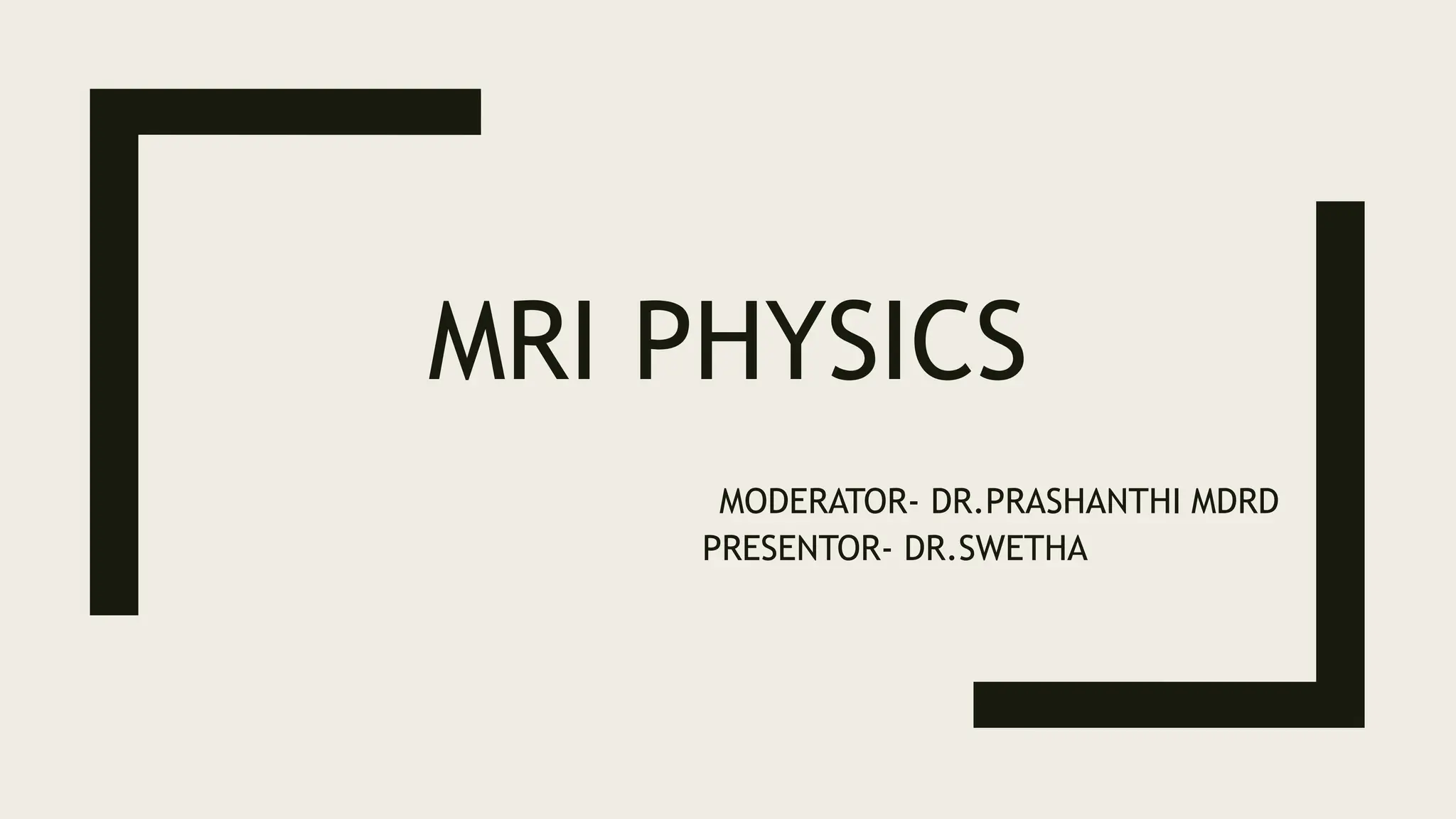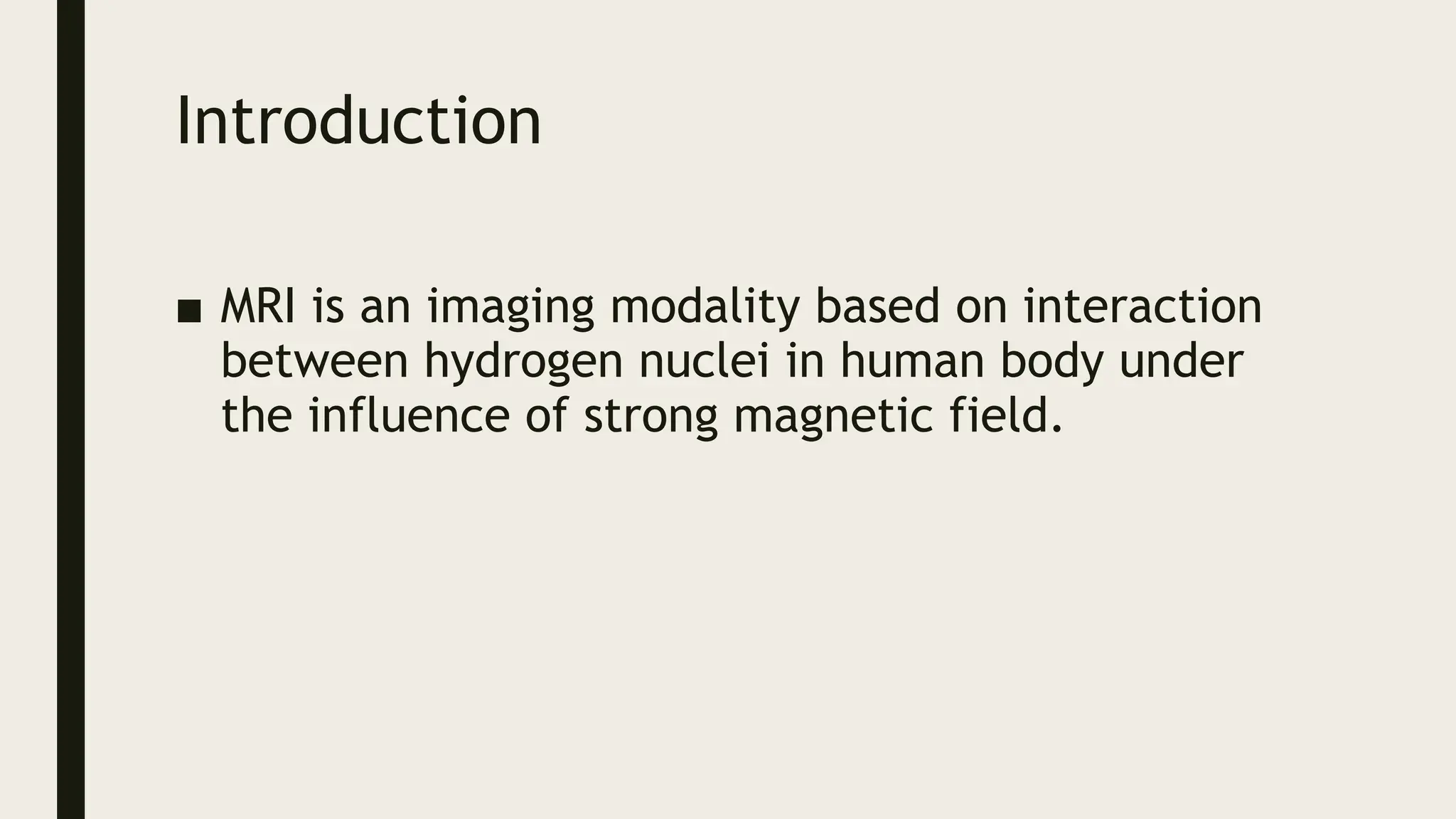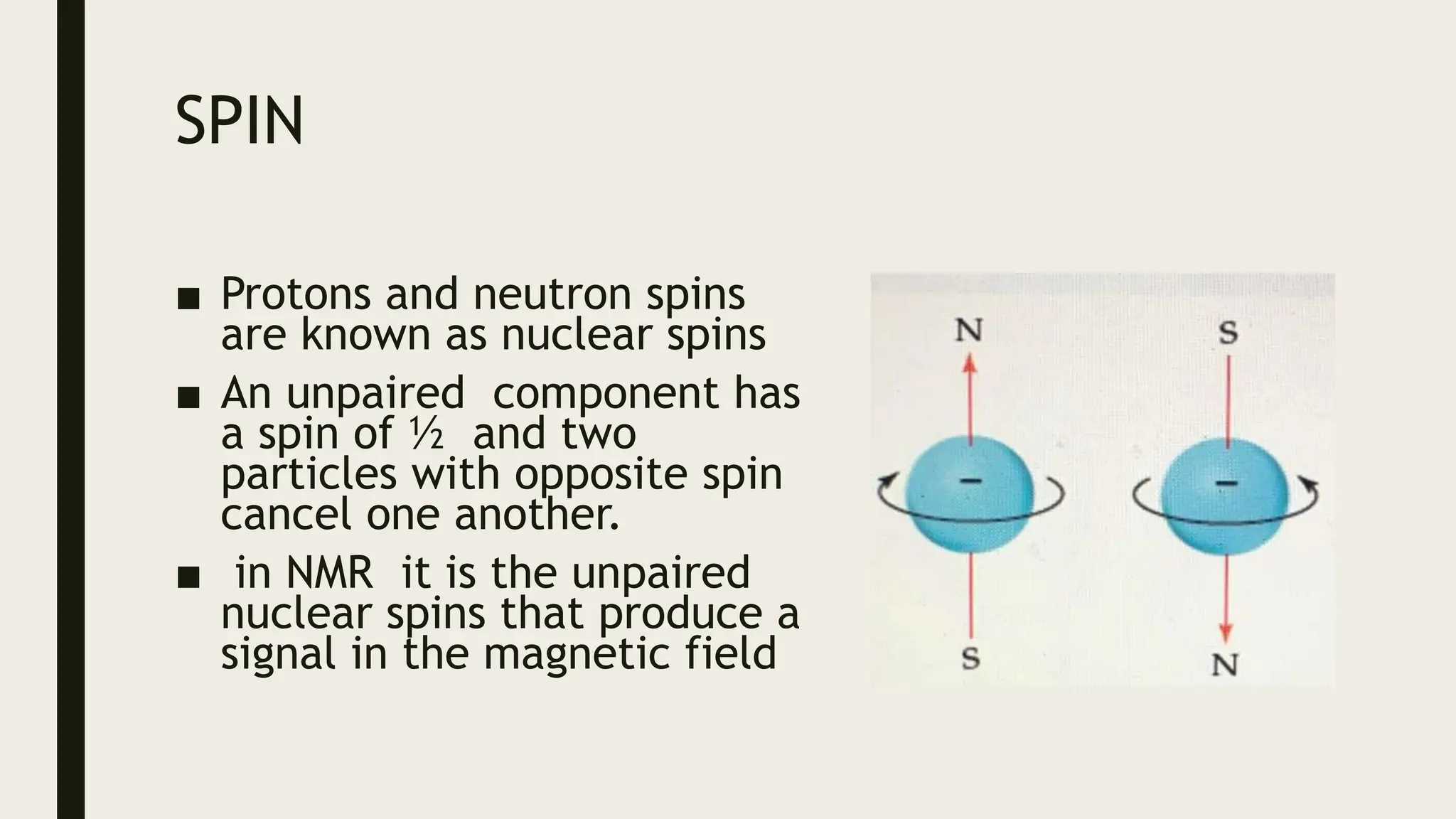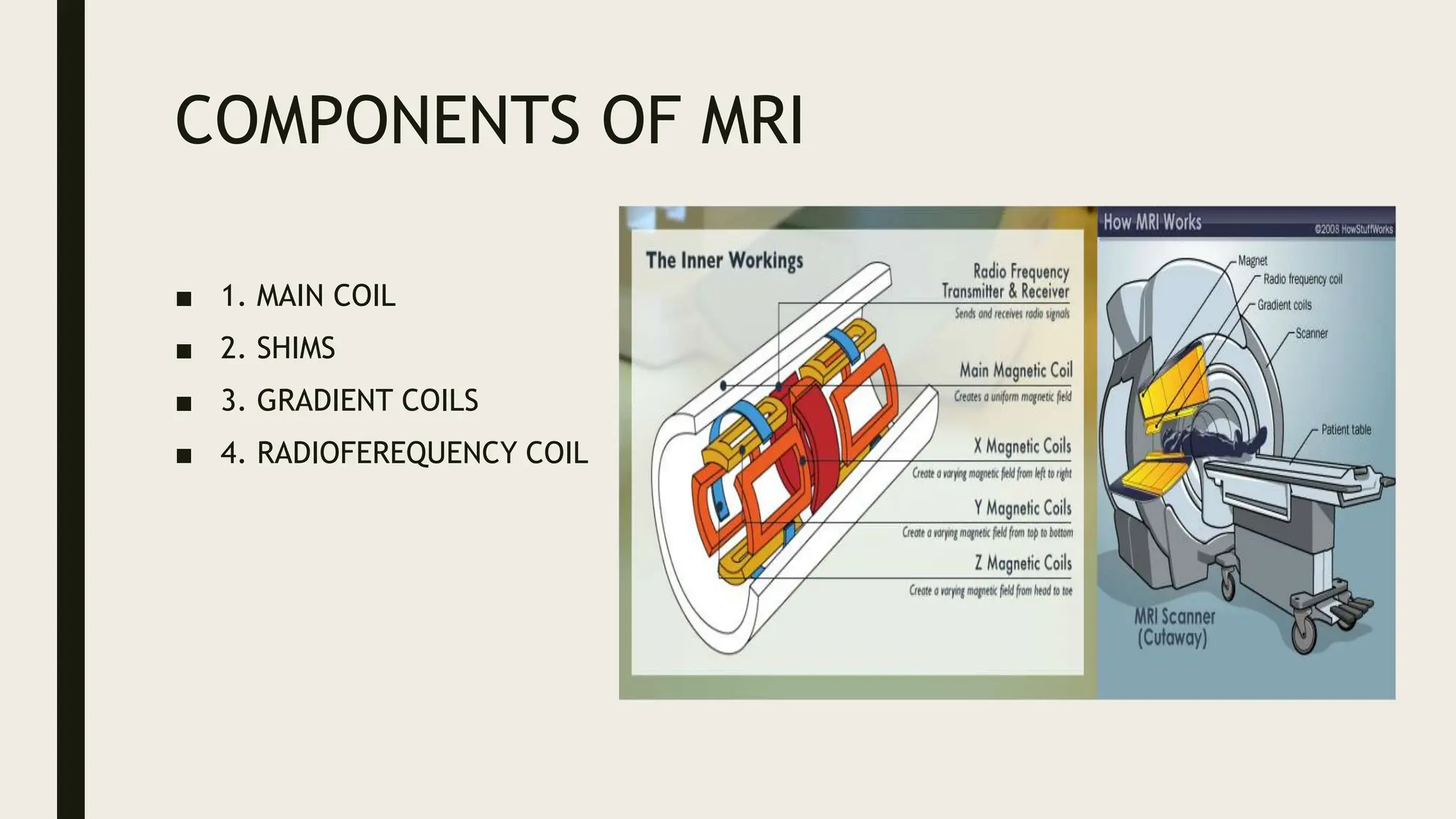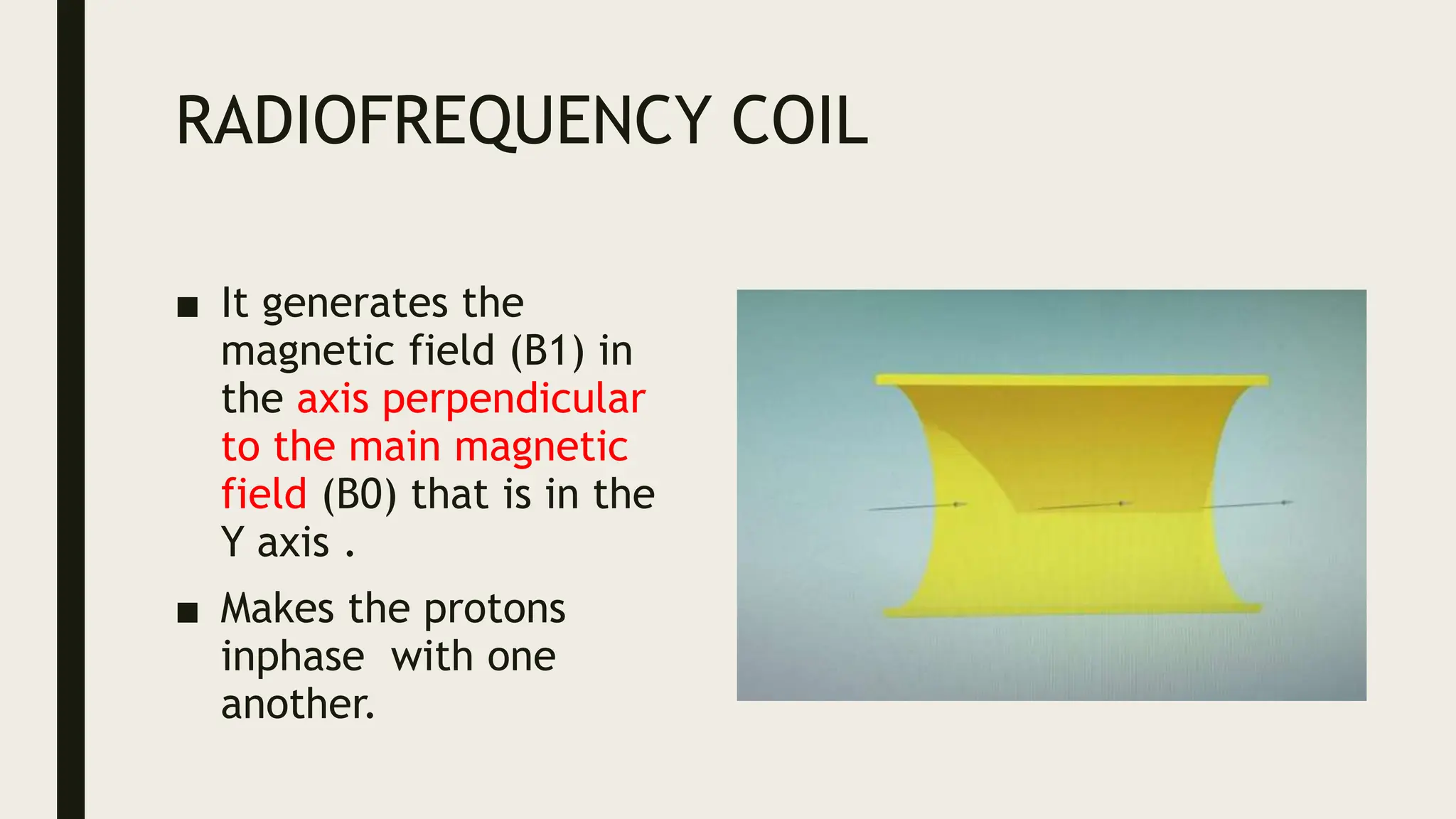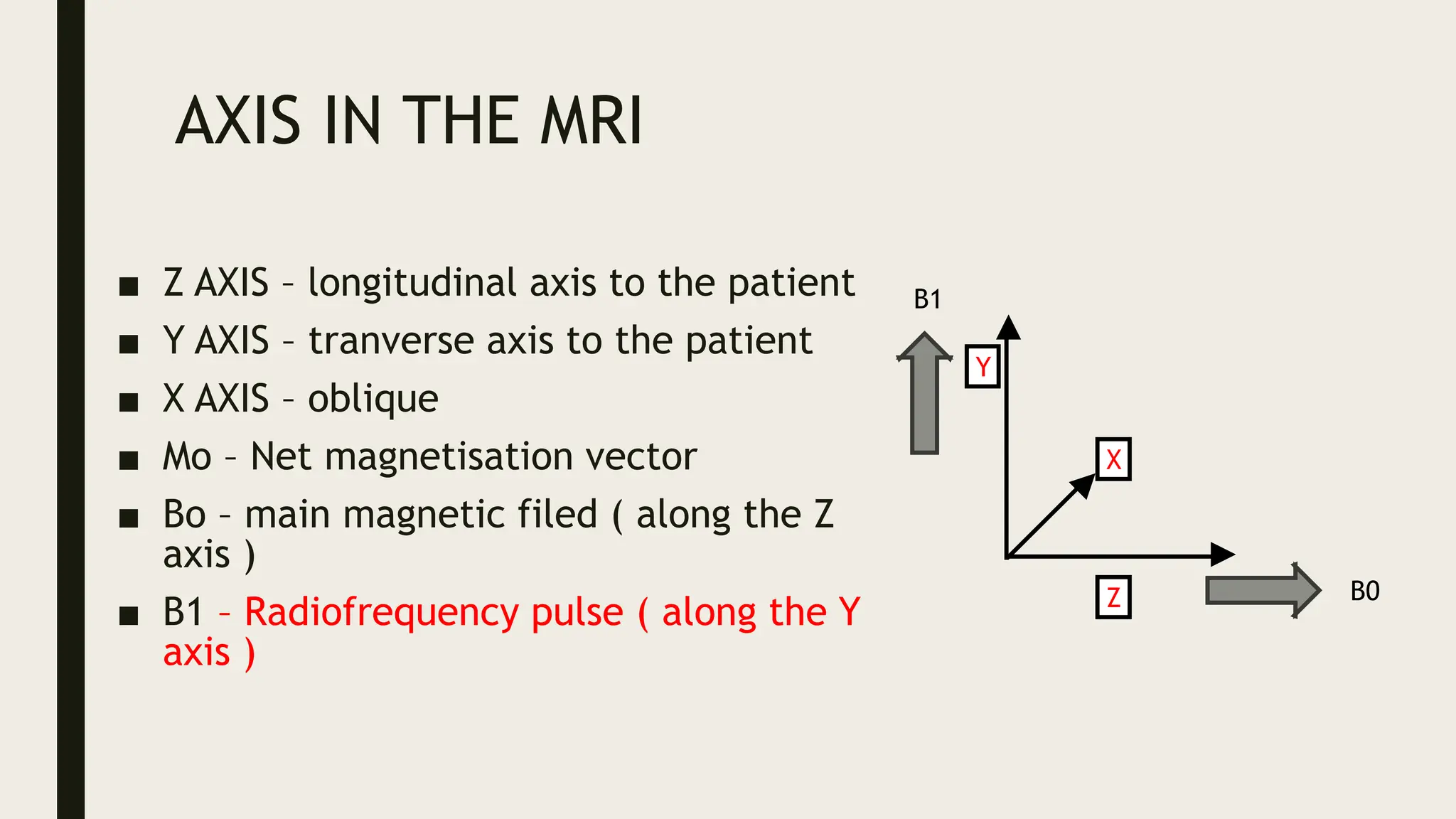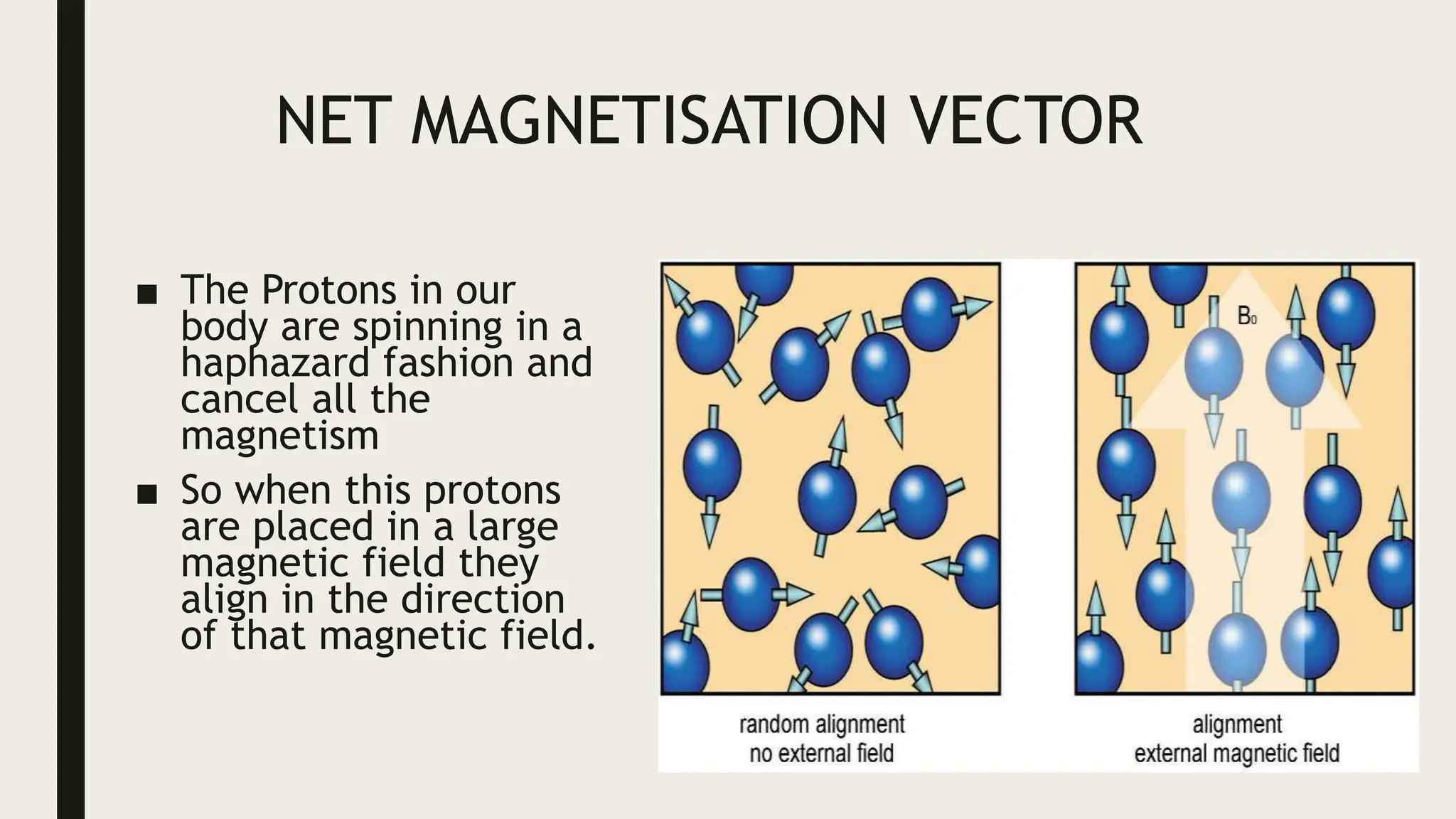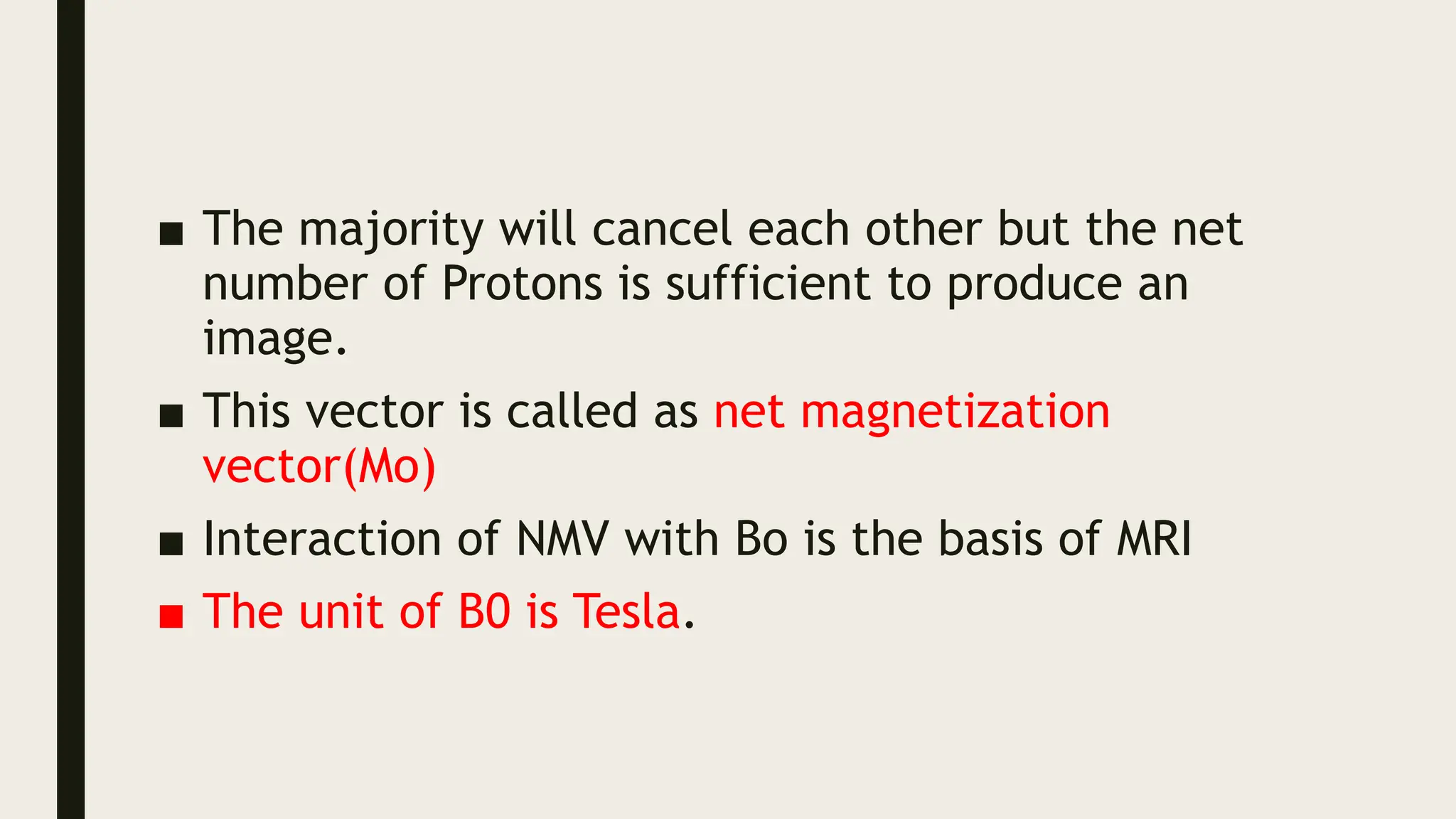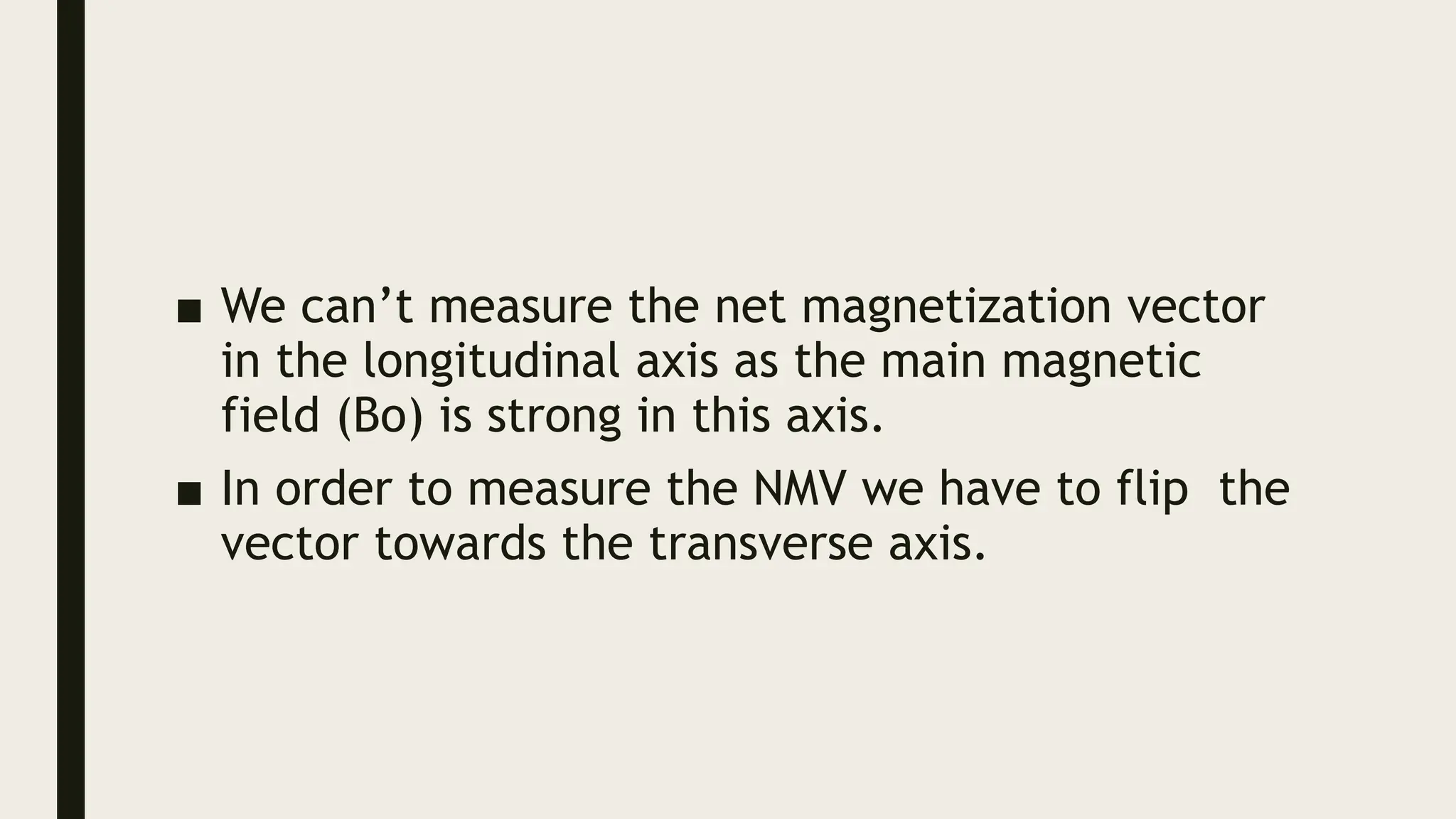This document provides an overview of MRI physics. It discusses how MRI works by using magnetic fields to align hydrogen nuclei in the body and radiofrequency pulses to manipulate the alignment of spins to generate signals to form images. It covers the basic principles of nuclear magnetic resonance, the components of an MRI scanner including the main coil, shims, gradient coils and radiofrequency coil. It also explains key concepts such as spin, T1 and T2 relaxation times, and how varying pulse sequence parameters like repetition time and echo time can provide different weightings to tissues in the images.
